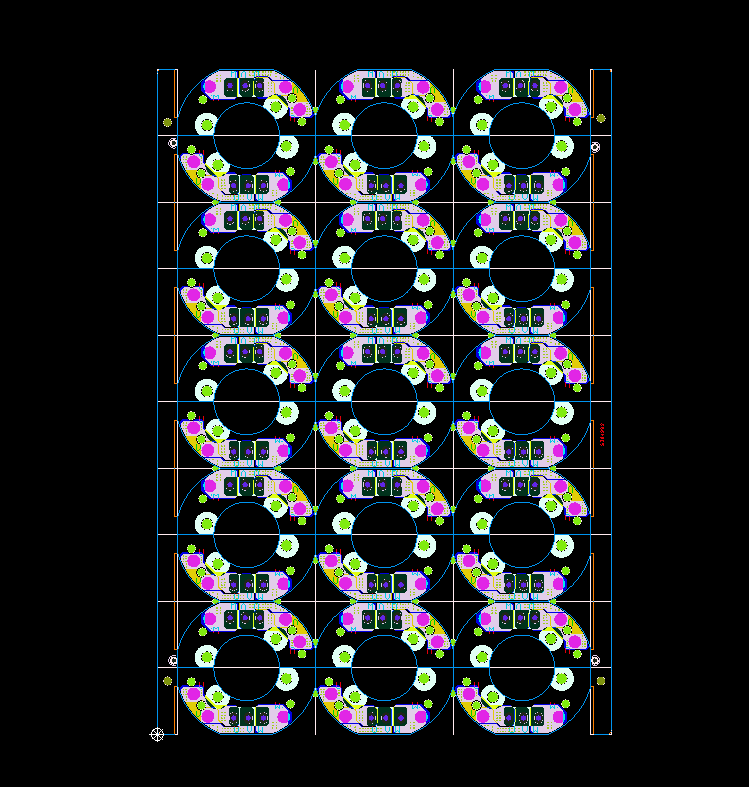In the design and manufacturing process of printed circuit boards (PCBs), Gerber files play a crucial role. Let’s take a deeper look at Gerber and why it is an indispensable part of the PCB process.
What are Gerber files?
Gerber files are a standard format file used to describe PCB designs. They contain detailed information about each layer of the PCB, such as copper foil layers, solder mask layers, silkscreen layers, and more. Gerber files use a specific coordinate system and instruction set to precisely define the position, shape, and size of each element on the PCB.
Why are Gerber files needed?
Bridge between design and manufacturing
PCB designs are usually completed in electronic design automation (EDA) software. However, PCB manufacturing factories need a common format to understand and produce PCBs. Gerber files act as a bridge between design and manufacturing. They ensure that the designer’s intentions can be accurately conveyed to the manufacturer, thereby producing PCBs that meet the design requirements.
PCB designs are usually completed in electronic design automation (EDA) software. However, PCB manufacturing factories need a common format to understand and produce PCBs. Gerber files act as a bridge between design and manufacturing. They ensure that the designer’s intentions can be accurately conveyed to the manufacturer, thereby producing PCBs that meet the design requirements.
Precise manufacturing instructions
Gerber files provide extremely detailed manufacturing instructions. They accurately describe the size and position of elements such as traces, pads, and vias on the PCB. Manufacturers can perform precise processing and manufacturing according to the information in Gerber files to ensure that every detail meets the design specifications. For example, Gerber files can specify the width and spacing of traces, the size of vias, etc. These parameters are crucial for the performance and reliability of the PCB.
Gerber files provide extremely detailed manufacturing instructions. They accurately describe the size and position of elements such as traces, pads, and vias on the PCB. Manufacturers can perform precise processing and manufacturing according to the information in Gerber files to ensure that every detail meets the design specifications. For example, Gerber files can specify the width and spacing of traces, the size of vias, etc. These parameters are crucial for the performance and reliability of the PCB.
Compatibility and universality
Gerber files are a widely accepted standard format, and almost all PCB manufacturers can understand and process Gerber files. This allows designers to cooperate with different manufacturers without worrying about format compatibility issues. Whether at home or abroad, Gerber files are the common language of PCB manufacturing.
Gerber files are a widely accepted standard format, and almost all PCB manufacturers can understand and process Gerber files. This allows designers to cooperate with different manufacturers without worrying about format compatibility issues. Whether at home or abroad, Gerber files are the common language of PCB manufacturing.
Version control and modification
During the PCB design process, multiple modifications and optimizations may be required. Gerber files can be easily version-controlled to record the content of each modification. If the PCB needs to be modified, the designer only needs to update the Gerber file and send it to the manufacturer. The manufacturer can produce according to the new Gerber file to ensure that the modified PCB meets the requirements.
During the PCB design process, multiple modifications and optimizations may be required. Gerber files can be easily version-controlled to record the content of each modification. If the PCB needs to be modified, the designer only needs to update the Gerber file and send it to the manufacturer. The manufacturer can produce according to the new Gerber file to ensure that the modified PCB meets the requirements.
Quality control and inspection
Gerber files also provide a basis for quality control and inspection. Manufacturers can inspect the produced PCB according to the information in Gerber files to ensure that each element meets the design requirements. For example, you can check whether the width of the trace is correct and whether the position of the pad is accurate. If problems are found, adjustments and repairs can be made in time to ensure the quality of the PCB.
Gerber files also provide a basis for quality control and inspection. Manufacturers can inspect the produced PCB according to the information in Gerber files to ensure that each element meets the design requirements. For example, you can check whether the width of the trace is correct and whether the position of the pad is accurate. If problems are found, adjustments and repairs can be made in time to ensure the quality of the PCB.
Comparison with other formats
Compared with other PCB design file formats, Gerber files have obvious advantages. For example, some EDA software may generate specific proprietary format files that can only be opened and edited in specific software. Gerber files, on the other hand, are an open standard format that can be viewed and processed on different software and platforms. In addition, Gerber files are usually smaller than other format files and are easier to transmit and store.
In conclusion, Gerber files play an irreplaceable role in the PCB design and manufacturing process. They are a bridge between design and manufacturing, provide precise manufacturing instructions, are compatible and universal, are convenient for version control and modification, and also provide a basis for quality control and inspection. For anyone engaged in PCB design and manufacturing, understanding and correctly using Gerber files is crucial.
